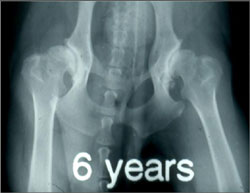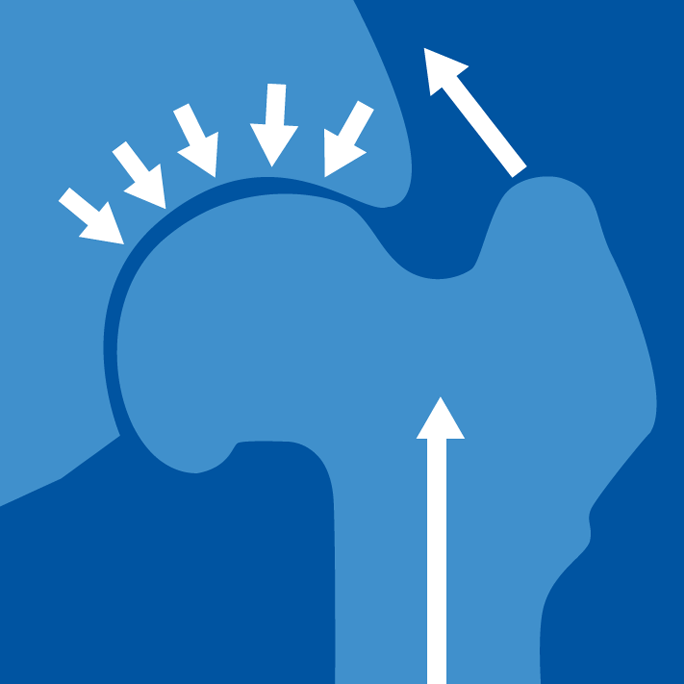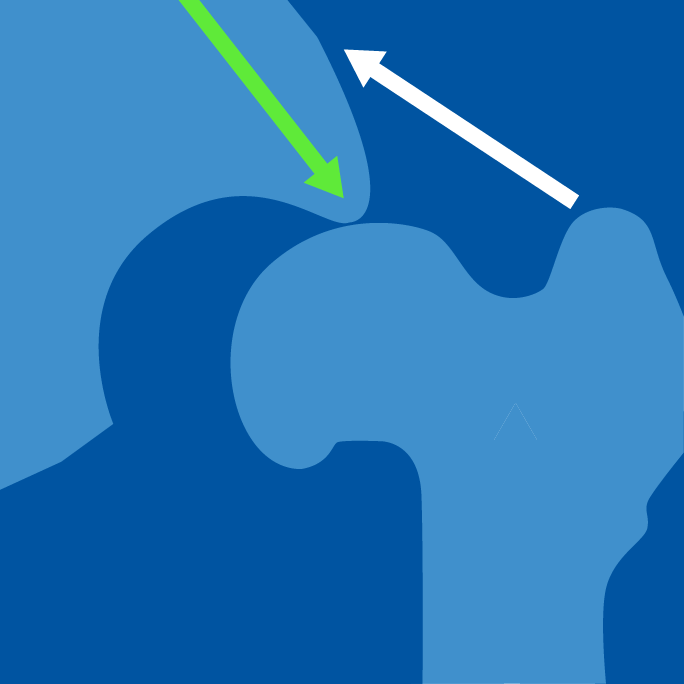Hopewell Animal Hospital is excited to now offer Penn Hip evaluations.
DYSPLASTIC HIPS
The expression hip dysplasia can be interpreted as the abnormal or faulty development of the hip. Abnormal development of the hip causes excessive wear of the joint cartilage during weight bearing, eventually leading to the development of arthritis, often called degenerative joint disease (DJD) or osteoarthritis (OA). The terms DJD, arthritis and osteoarthritis are used interchangeably.
Canine Hip Dysplasia (CHD) was first described in 1935 by Dr. Gerry B. Schnelle. Dr. Schnelle initially called it “bilateral congenital subluxation of the coxofemoral joint”. It was originally thought to be a rare condition but is now recognized as the most common orthopedic disease in dogs. This radiographic image is the first known example of CHD to be published in a scientific journal.





